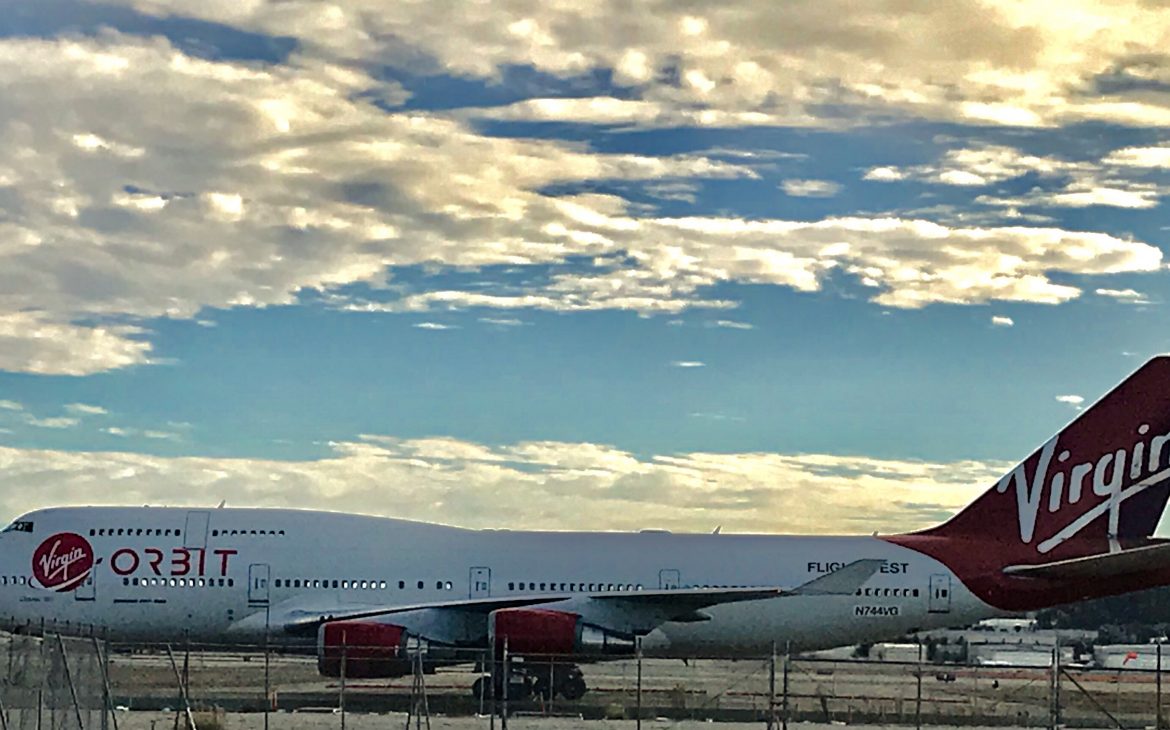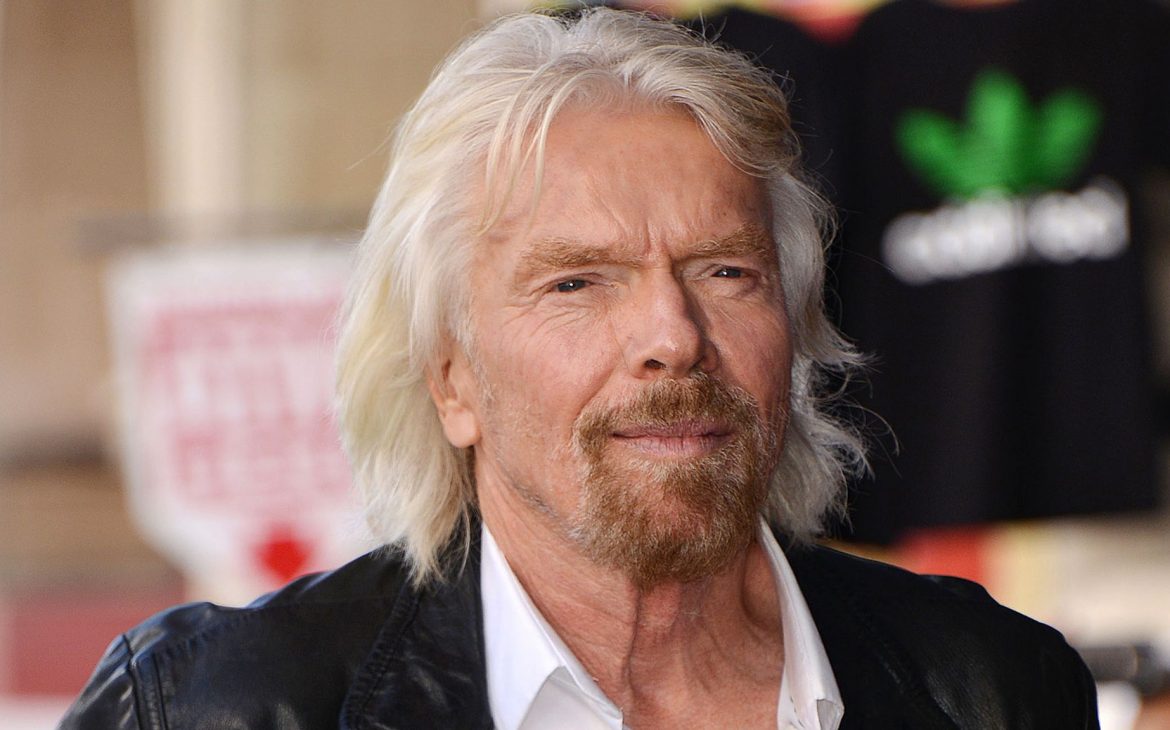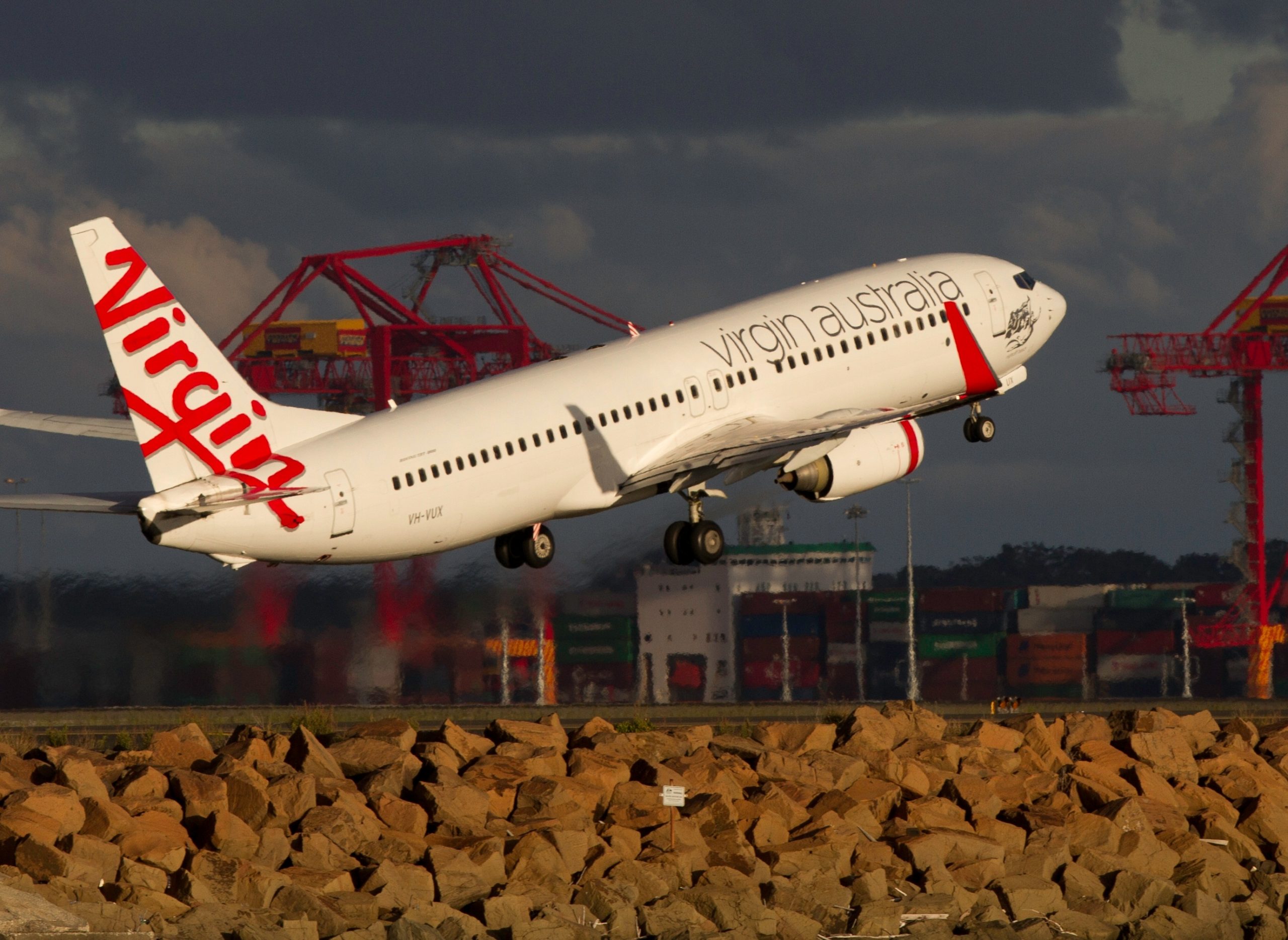Virgin Orbit has failed in its maiden attempt to launch a rocket carried by a Boeing 747 off the coast of Southern California. The LauncherOne rocket brilliantly lighted its booster engine on cue after being released from the carrier aircraft — the first time the company had attempted an in-air ignition. An anomaly occurred early in first stage flight, and then the mission was safely terminated.
The attempt was a test for the company’s plan to launch satellites into space in the following years and followed five years of development on the 21.3-metre LauncherOne rocket. Flames shoot from a rocket which has just been dropped from beneath the wing of a jumbo jet. Virgin Orbit’s rocket fired briefly after being dropped from beneath the wing of a jumbo jet. There was no immediate info on what went wrong with the rocket, which carried a test satellite, or on whether it had broken up or fallen into the sea.

The failed test provided a ”treasure trove” of data. The modified jumbo jet took off from Mojave Air and Space Port in the desert north of Los Angeles, and flew towards the Channel Islands, in the Pacific Ocean, where the drop occurred. After taking off from Mojave, Cosmic Girl will fly due southwest to our drop point just south of the Channel Islands. Once we reach the drop point, we’ll enter into a loop that we call the “racetrack” as we wait for final go/no-gos. The rocket was planned to fall for a few seconds before the first two stages ignited and propelled it down the coast toward Antarctica Landform before its demonstration payload gets an entry into a low Earth orbit.
Virgin Orbit now had a “treasure trove” of data, according to chief executive Dan Hart. He said, “We accomplished many of the goals we set for ourselves, though not as many as we would have liked. Nevertheless, we took a big step forward today. Our engineers are already pouring through the data. Our next rocket is waiting. We will learn, adjust, and begin preparing for our next test, which is coming up soon.”
Virgin Orbit’s vice-president for special projects Will Pomerantz said during a pre-flight briefing on Saturday that about half of first rocket launches fail. “History is not kind, necessarily, to maiden flights. There had been numerous tests to verify that the system was ready. In the end, the questions are always, has everything been thought about and are there any gaps or seams. Those are the questions you only learn when you commit to a flight.”

A rocket with Launcher One written on the side is attached underneath the wing of a Virgin branded 747.
How long the setback will affect the finances is not now clear. It has six additional rockets still under construction in its factory. A successful launch by Virgin Orbit could have marked a dramatic step in getting back on track after the coronavirus pandemic sent most employees home earlier this year.
The time is just right for small satellite launch market that is why Virgin Orbit is targeting for launching satellites ranging in every size from small toasters to as big as household refrigerators. As told by Mr.Hart, the flight crew is preparing to board the aircraft. Cosmic Girl is piloted by Chief Test Pilot Kelly Latimer, who has been the wind beneath company wings throughout the entire flight test program. Technological advancements have enabled satellites much smaller than traditional payloads to do “real work” in space and for markets ranging from commercial to national security.
While other companies are developing rockets for the small satellite market, and builders of big rockets like SpaceX can carry them into orbit in a ride-share arrangement with large satellites, Virgin Orbit’sOrbit’s air-launch system, based on the aviation industry workhorse 747, is intended to put a satellite up when and where a customer needs it. Virgin can fly to space from any place that can host a 747, which is almost any place, Mr Hart said.
Space company has plenty of work lined up for Virgin Orbit as it has many missions on the books for customers which include US Space Force and Britain’sBritain’s RAF. It is working internationally on plans for launches from the UK & Japan.
Mr Hart provided no specific dollar value for the missions, just called it “hundreds of millions”. Air launch technology dates back decades to X-15 rocket planes in the 1950s and ’60s’60s. For satellites, the method currently in use is Northrop Grumman’sGrumman’s Pegasus rocket program, which had dozen of launches since 1990.
Virgin Galactic has been preparing to begin flights carrying passengers into the lower reaches of space from southern New Mexico. Headquartered in Long Beach, California, Virgin Orbit started as a sister company of Virgin Galactic but has since separated.
